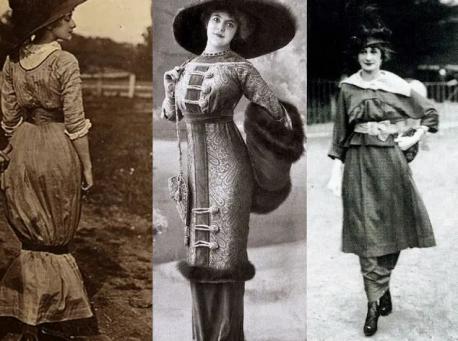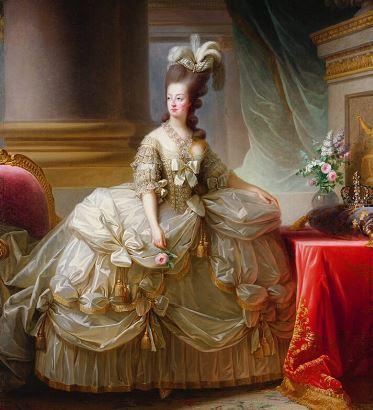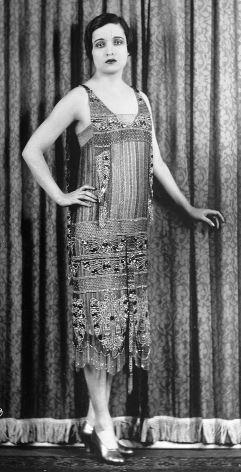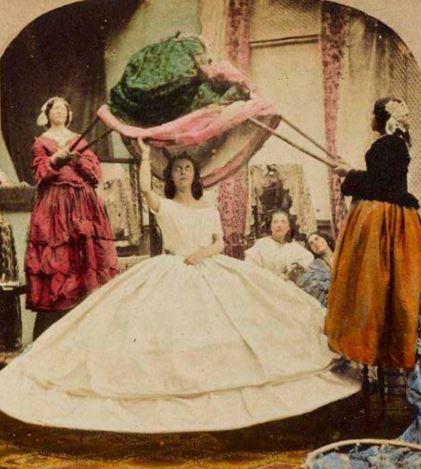Results: Fashion forward or fashion flops? Part 2 of 4.
Published on 01/14/2025
Every generation has its own ideas for being fashionable. Here's a collection from days gone by of some very questionable fashion choices. Ranker is my source for this series. (Right click to view pictures in full.)

QUESTIONS
GO to COMMENTS
Comments
1.
1.
In the 1910s, French designer Paul Poiret - dubbed "The King of Fashion" in America - debuted the hobble skirt. The long, close-fitting skirts forced women who wore them to adopt mincing, tiny steps. True, Poiret's design liberated women from heavy petticoats and constricting corsets. But as he said, "Yes, I freed the bust. But I shackled the legs." Would you have considered this a good trade-off from corsets and petticoats?

Yes
15%
331 votes
No
35%
779 votes
Maybe
25%
558 votes
Not Applicable
24%
532 votes
2.
2.
Panniers (from the French word "panier," meaning "basket") were popular in the 17th and 18th centuries. The boxed petticoat expanded the width of skirts and dresses, and stood out on either side of the waistline. Panniers varied in size and were made of whalebone, wood, metal, and sometimes reeds. Extremely large panniers were worn mostly on special occasions and reflected the wearer's social status. Servants wore smaller hoops. Two noblewomen, however, couldn't walk through an entrance at the same time or sit on a couch together. The device was also uncomfortable, limiting movement and activity. Do you think that this style made bathroom necessities a bit of a challenge?

Yes
57%
1254 votes
No
12%
273 votes
Maybe
10%
222 votes
I'm guessing that noblewomen had some assistance...
21%
451 votes
3.
3.
During the Roaring '20s, the hourglass shape gave way to the boyish flapper figure and underwear got an overhaul. The goal of every undergarment was to flatten the breasts and torso, so that flapper dresses could hang straight down without any curvaceous interruptions. Corset-makers R. & W.H. Symington invented a garment, the Symington Side Lacer, that would flatten the breasts. The wearer would slip the garment over her head and pull the straps and side laces tight to smooth out curves. Other manufacturers designed similar devices. The Miracle Reducing Rubber Brassiere was "scientifically designed without bones or lacings," while the Bramley Corsele combined the brassiere and corset into one piece that easily layered under dresses. Do you think that this fashion could become popular today?

Yes
14%
310 votes
No
44%
977 votes
Maybe
29%
634 votes
Why?
13%
279 votes
4.
4.
The crinoline, also known as the hoop skirt, was a bell-shaped device that pushed the volume of skirts to an extreme degree. Worn in the 1800s by Victorian women, crinolines were originally petticoats made of linen stiffened with horsehair. Later, the invention of the steel cage crinoline offered the same voluminous look without the extra heat and bulk of thick petticoats. These undergarments were unwieldy, but they were also dangerous. Thousands of women died in the mid-19th century as a result of their hooped skirts catching fire. Alongside fire, other hazards included the hoops being caught in machinery, carriage wheels, gusts of wind, or other obstacles. Do you think that this to-die-for fashion is a good example of a complete lack of common sense?

Yes
51%
1130 votes
No
16%
360 votes
Maybe
15%
323 votes
To each their own.
18%
387 votes
COMMENTS


